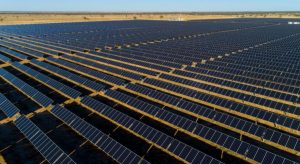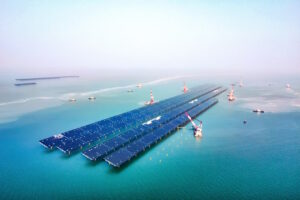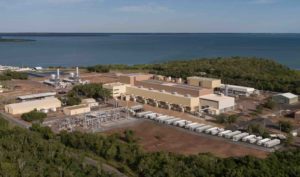One of Australia’s leading solar contracting companies, RCR Tomlinson, has taken a massive write-down on one of its flagship solar projects, sending the company into a loss for the last financial year, and causing it to scrap dividends and make an equity raising.
RCR says it has taken a $57 million write down on the $315 million contract values for the 150MW Daydream and the 50MW Hayman solar farms owned by Edify Energy in north Queensland,. both of which are near completion.
Talk of the write-downs has been circulating for some time, since the departure of its CEO a few months ago, and RCR is not the only contractor believed to be suffering. But because it is listed, its problems are visible because it is required to disclose its financial position and any writedowns.
Concerns about cost over-runs and contract disputes at solar projects were first raised by RenewEconomy earlier this year, with most solar farms suffering delays because of stricter requirements imposed by the Australian Energy Market Operator and delays at the local network level. See below.
RCR has been one of the biggest developers of solar farms in the past two years. It recently completed the 124MW Sun Metals solar farm in north Queensland, along with the Darling Downs, Longreach, and Oakey solar farms in Queensland and the Swan Hill solar farm in Victoria. It had previously built the Broken Hill and Moree solar farms in NSW.
It is also working on the Ganawarra solar farm and accompanying Tesla battery in Victoria, and the Emerald, Haughton, Clerment, Wemen, and Greenough River solar farms.
But on Daydream/Hayman, it appears to have run into major problems, citing “external” delays, and local issues such as bad ground conditions – which resulted in greater piling needs and costs – and poor weather.
In its statement and presentation to shareholders, RCR said its Hayman and Daydream projects, located side by side, were substantially complete, and energisation and commissioning has commenced.
But it admitted the Project had “experienced significant cost overruns” due to several compounding project-specific issues.
“These project-specific issues required the Company to continuously revise its execution methodologies to mitigate delays, leading to increases in subcontractor costs (both people and plant) and logistics cost overruns.
“As a result of these cost overruns that arose over the life of the Project, RCR has realised cumulative write- downs of $57 million from the tendered margin on the Project.”
It said a large proportion of the write-downs experienced were only recently identified. It said this was due to the on-site procedures adopted by a limited number of site personnel which had the effect of circumventing RCR’s standard processes and project level systems relating to procurement commitments. It did not suspect fraud.
RCR noted that its focus on construction contracts left it exposed to situations such as project delays, unanticipated increases in the cost of delivering the project and high working capital requirements in the later stages of the project.
RCR appears to be taking a step back from the solar industry, saying it would increase its exposure to the rail and transport sectors, and would “selectively pursue” renewables opportunities. It would seek “alliance style” contracting models rather than fixed price contracts.
It hinted that the Daydream/Hayman project was not the only problem, with negotiations being conducted with other customers for variations and claims.
Concerns about solar projects first surfaced when AEMO clamped down on what is known as the “continuous uninterrupted generation”, meaning that many solar farms needed greater inverter capacity to ride through events.
Newly enforced power system strength requirements have also caused delays and added to the costs of many projects. Some unsuspecting project owners have also been caught out by changes to marginal loss factors and warnings that they could be curtailed because of lack of grid infrastructure.
Some developers have criticised AEMO and the networks for being heavy-handed. AEMO CEO Audrey Zibelman recently admitted the stricter rules were causing delays, but also complained about the quality of some developers.
Interestingly, Grant Finn, the head of another major solar contractor Downer Group, noted in his company’s recent results, that the renewables business was booming and most projects were large-scale and “were not particularly difficult in themselves engineering wise.”
But he said: “Because they’re bid at pretty tight margins, you can’t have too many things that upset you. Whether it be ground conditions or weather or whatever. I think all of the contractors are still in a position of making sure that they have very good execution on construction of these projects.
“Every man and his dog is in there trying to build these things,” Finn said.
“It was the path that most of the industrial construction providers went to, where – when mining – when the mining boom ended and there wasn’t a lot of development in mine sites. Most people turned to these areas. There is a fair bit of competition in there.”










